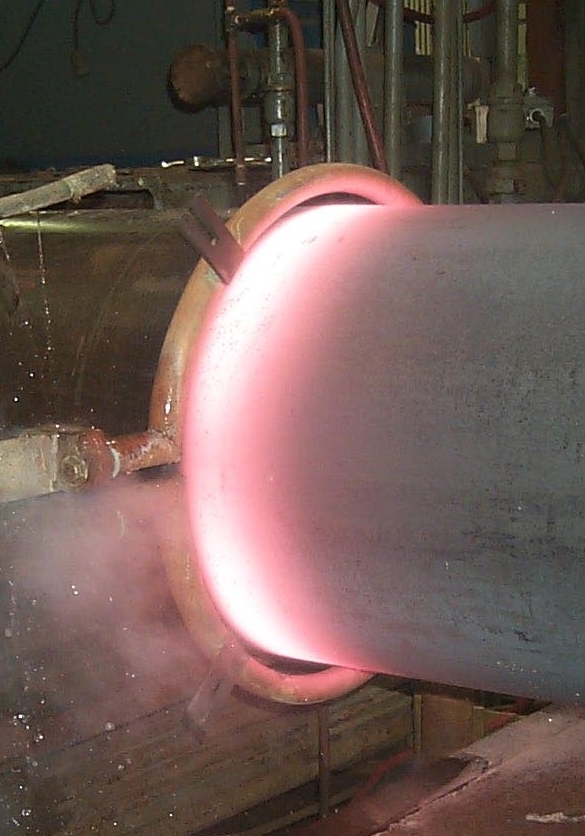| Pipe Bending |
Heat Induction
|
|||
Heat Induction An induction coil is placed around a small section of the pipe at the bend point. It is then heated to between 800 and 2,200 degrees Fahrenheit (430 and 1,200 °C). While the pipe is hot, pressure is placed on the pipe to bend it. The pipe is then quenched with either air or water spray. Heat-Induction bending is used on large pipes such as freeway signs, power plants, and petroleum pipe lines. The heat induction pipe bending process was originally used during World War II to harden gear and ball bearing surfaces. Today, induction bending enables the bending of large pipes, including square and rectangular tubes. To create induction bends, induction pipe bending experts place an induction coil around a pipe. The coil heats a narrow section of pipe to 800 to 2,200 degrees Fahrenheit, depending on the material type. Once the proper temperature is reached, the pipe slowly passes through the coil as the bending force is applied. After the induction bends are formed, the heated area is cooled by a spray of water or air. Creating a precise induction bend requires extensive induction bending expertise. Compared to cold forming methods,induction bending minimizes deformation of the material and distortion of the cross-section even when tight radius bends are required. Pipes formed with induction pipe bending can be found in power plants, highway road signs and petroleum pipelines. |
 |
-
Press Bending
-
Rotary Draw Bending
-
Roll Bending
Three Roll Push Bending
Simple Three Roll Bendin -
Sand_packing | Hot-Slab Forming


